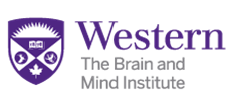Document Type
Article
Publication Date
1-15-2019
Journal
NeuroImage
Volume
185
First Page
455
Last Page
470
URL with Digital Object Identifier
10.1016/j.neuroimage.2018.10.045
Abstract
© 2018 Learning associations between stimuli and responses is essential to everyday life. Dorsal striatum (DS) has long been implicated in stimulus-response learning, though recent results challenge this contention. We have proposed that discrepant findings arise because stimulus-response learning methodology generally confounds learning and response selection processes. In 19 patients with Parkinson's disease (PD) and 18 age-matched controls, we found that dopaminergic therapy decreased the efficiency of stimulus-response learning, with corresponding attenuation of ventral striatum (VS) activation. In contrast, exogenous dopamine improved response selection accuracy related to enhanced DS BOLD signal. Contrasts between PD patients and controls fully support these within-subject patterns. These double dissociations in terms of behaviour and neural activity related to VS and DS in PD and in response to dopaminergic therapy, strongly refute the view that DS mediates stimulus-response learning through feedback. Our findings integrate with a growing literature favouring a role for DS in decision making rather than learning, and unite two literature that have been evolving independently.
Creative Commons License

This work is licensed under a Creative Commons Attribution-Noncommercial-No Derivative Works 4.0 License.

- Citations
- Citation Indexes: 12
- Usage
- Downloads: 70
- Abstract Views: 7
- Captures
- Readers: 74
- Mentions
- Blog Mentions: 1



Notes
© 2018 The Authors. Published by Elsevier Inc. This is an open access article under the CC BY-NC-ND license (http://creativecommons.org/licenses/by-nc-nd/4.0/).
The article was originally published at:
Hiebert, N. M., Owen, A. M., Ganjavi, H., Mendonça, D., Jenkins, M. E., Seergobin, K. N., & MacDonald, P. A. (2018). Dorsal striatum does not mediate feedback-based, stimulus-response learning: An event-related fMRI study in patients with Parkinson's disease tested on and off dopaminergic therapy. NeuroImage, 185, 455-470. DOI: https://doi.org/10.1016/j.neuroimage.2018.10.045